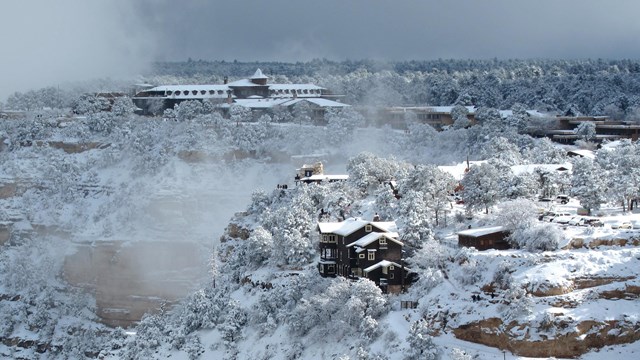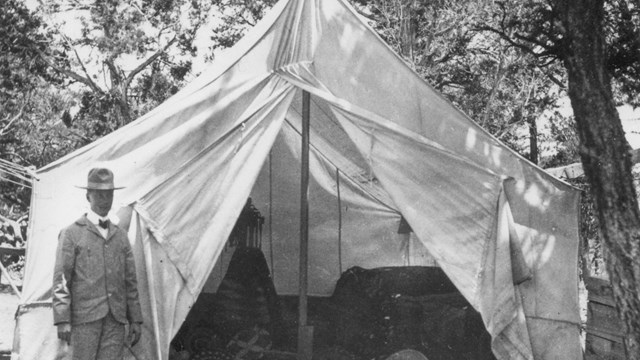
The Hopi House (1905) is a large, multi-story building of stone masonry, shaped and built like a Hopi pueblo. When Mary Colter was commissioned in 1904 by the Fred Harvey Company to design an “Indian Arts Building” as the hospitality giant liked to call their souvenir shops, the talented and stubborn architect was eager to accept the challenge. She was one of just a few women in a male-dominated field, and “lady-like” wasn’t in her vocabulary. Neither were the words “traditional European influences.” Colter’s vision extended well beyond that. Inspired by the natural beauty of the Grand Canyon, she wanted to design something that appeared native, natural and timeless. 
The Hopi House is rectangular in plan, and the multiple roofs are stepped at various levels giving the building the impression of pueblo architecture. The sandstone walls are reddish in color, and tiny windows, like those of true Hopi structures, allow only the smallest amount of light into the building and keep the hot desert sun from entering. 
Hopi House (1905)
Continue to the Hopi House photo gallery on Flickr. 
Hopi House History Continued
Learn more about the Hopi House on Arizona State University's Nature, Culture, and History at Grand Canyon website. 
The Historic Village
With the arrival of the First Steam-Powered Train in 1901, the quiet area of the South Rim rapidly expanded into the Grand Canyon Village. 
Mary Colter's Buildings
Mary Colter was the chief architect and decorator for the Fred Harvey Company from 1902 to 1948. 
Entrepreneurs
After the Santa Fe Railroad started bringing visitors to the canyon, entrepreneurs came to the canyon to make their fortune. |
Last updated: May 3, 2021
